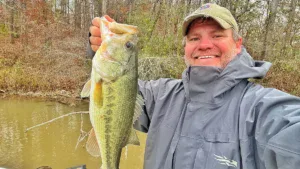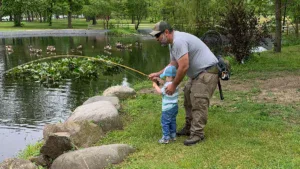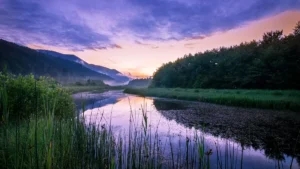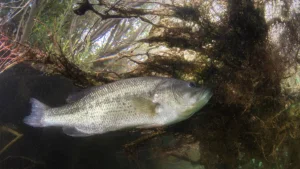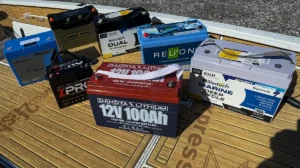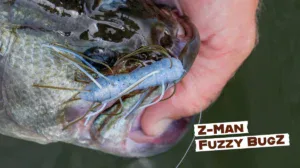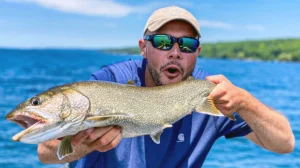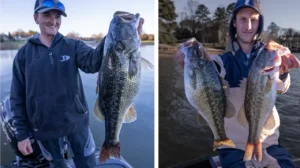East Tennessee’s tall mountains and deep hollers hide plenty of secrets, including some pertaining to bass fishing. Jacob Wheeler, along with other top finishers at the 2017 Bassmaster Elite Series tournament on Cherokee Lake, let a big one slip out — the Damiki rig. It outpaced all other techniques that frigid week in February.
But what seemed revolutionary to many anglers outside the Volunteer State was business as usual in select spots for some time. Bassmaster Elite Series angler Jeff Gustafson won twice, including the 2023 Bassmaster Classic, on a stretch of the Tennessee River not far from Cherokee with a version of the Damiki rig. Gustafson, who hails from Ontario, called the technique “moping” and credited the Lindners of In-Fisherman fame for teaching it to him long ago.
Whatever you choose to call it, the Damiki rig’s effectiveness has broken through geographical boundaries. It’s an efficient way to catch bass anywhere they chase baitfish schools through deep water during winter and early spring. Wringing out its full potential requires understanding its capabilities, components and applications.
What is a Damiki Rig?
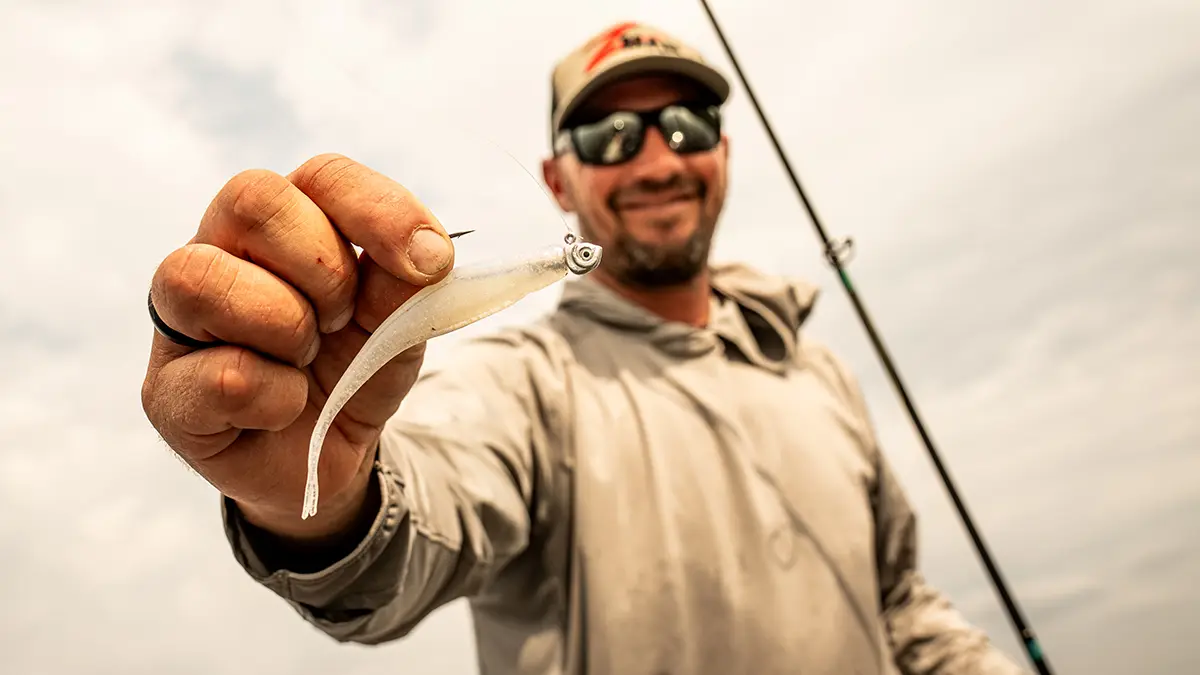
Simple in form but sophisticated in function, the Damiki rig is a finesse technique built on light line, a small soft-plastic minnow that’s threaded on a jig head, and minimal movement. Its unique horizontal orientation when fished vertically mimics a small baitfish — most often a threadfin shad — that’s hovering in place, too cold to move. That’s a meal bass can’t resist.
The Damiki rig shines when the sun does. Bluebird days, when the wind is calm and it looks way warmer than it is outside, are prime. A bit of stain to the water only improves the situation. Its effectiveness falls off as spring comes on and water warms past the 50-degree mark, moving bass shallower and making them more interested in bigger and faster lures.
While largemouth and spotted bass fall for this technique, it produces more and bigger smallmouth. They tend to be more nomadic than the other two, which cling closer to cover.

How to Fish a Damiki Rig
Damiki rigs are presented in one direction — straight over the gunnel. Once it sinks to the desired depth, close your spinning reel’s bail and point your rod’s tip at the water’s surface. Then, your work is done; the less it moves the better you do. Adjusting your grip on your rod or your boat rocking from a passing wake adds plenty of quivering action.
While you won’t be fishing on deep-water structure, your Damiki rig needs to be near it. Depressions, points, rock piles and channel swings in up to triple-digit depths attract baitfish. They suspend, so cover isn’t a consideration. Bass usually wait just below, near, or on the bottom. The sweet spot for your bait is in between them.

Putting your Damiki rig in those perfect places is impossible without electronics. They detail where your lure is in relation to baitfish and bass and how the latter reacts to it. Forward-facing sonar has been a huge boon, scanning for schools of baitfish and bass whichever direction you point it. But having only down-scanning or 2D sonar doesn’t take you out of the game. Both show all you need to know, though idling will be required to find baitfish and bass.
Rod and Tackle Setups
Balance makes Damiki rigs better. That starts with your rod, which should be 7 feet or shorter, like a G Loomis IMX-PRO SJR782S or Daiwa Tatula XT. Longer models push your offering toward the outside of your electronics’ transducer cone, making it less likely to appear on your graph. Its mix of medium or medium-light power and fast action adds sensitivity, protects light line, sets hooks in deep water and tames the surges of smallmouth.
Spinning reels in a 2500- or 3000-size, like Shimano’s Vanford FA or Lew’s KVD, have two important benefits: Their large diameter spool makes you forget tangles caused by line memory, and their front drag has large washers, which slip smoothly just before your line breaks when adjusted properly.
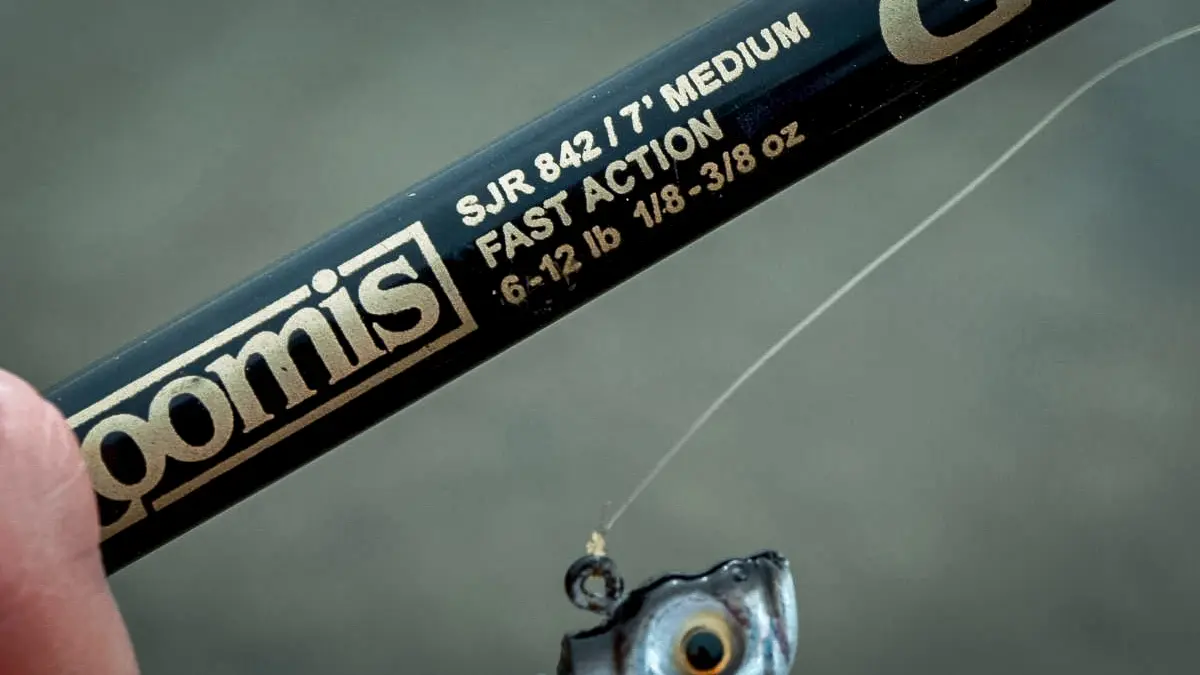
Fill your reel’s spool with 6- or 8-pound-test fluorocarbon line that’s subtle enough for finesse presentations. Sunline Super FC Sniper, Berkley Vanish and P-Line Tactical are popular choices. While super-sensitive braid is better at transmitting light bites, it absorbs water, which creates cold-weather hassles, whether freezing in your spool or soaking already cold hands.
While shad-shaped heads, such as Damiki’s Damiki Rig Jighead, add realism, round, aspirin, and other shapes work equally well. It’s their 90-degree light wire hook, either 2/0 or 3/0 in size, that’s non-negotiable. Use a Palomar knot, which is easy to tie with numb fingers. It draws tight, ensuring your line stays attached to the top of your jig head and perpendicular to your bait.
Match your Damiki rig’s weight to depth. A 3/16-ounce head on a 3- or 3.5-inch minnow works well down to about 20 feet. Use a 3/8- or 1/2-ounce model to reach deeper bass. Add some weight to each when using a longer minnow. The extra weight brings balance, ensuring it fishes horizontally.
Best Baits for Damiki Rig

The soft-plastic minnow on a Damiki rig has two jobs: look like a baitfish and be an easy target for a hungry bass. Those that do both share these three traits.
- Size: 3 inches is the sweet spot, though you may need to shrink to 2 inches or stretch to 4 inches to match the hatch where you’re fishing. Anything longer becomes difficult to present horizontally.
- Tail: Soft-plastic minnows with a simple straight or forked tail are best. Kicking tails will work, but the lack of movement stalls their action, and the extra weight on their stern puts it tail down, upsetting the horizontal presentation you’re working to create.
- Color: Natural baitfish patterns that sport a generous splash of a solid color are best. White, pearl, smoke, and chartreuse, matched to a darker back, create an easily seen target in stained water.

Thanks to the popularity of mid-strolling with forward-facing sonar, tackle shops are filled with small soft-plastic minnows, which are perfect for Damiki rigs, too. The technique’s namesake, Damiki Armor Shad, is still available and a good choice. Other options include YUM’s FF Sonar Minnow, Rapala’s CrushCity Mooch Minnow, and Zoom’s Fluke and Tiny Fluke.
Common Mistakes and Extra Tips
Good bass anglers become great ones by minding the details. It’s no different when mastering the Damiki rig. So, keep these in mind:
- Keep it tight: Slack line doesn’t help your Damiki rig. So, always keep yours tight. That’ll ensure your offering has the right amount of action — almost none. And you’ll feel the softest bites. It’s not uncommon to have a bass approach, eat your lure and sit there, with you feeling barely a tick.
- Stay on top: With eyes toward the top of their head, bass are built to feed upwards. Make it easy for them by keeping your rig above them. How far depends on water clarity and temperature; get closer as water turns colder or dirtier. Don’t fret about its relation to baitfish. Close is good enough.
- Do not dawdle: Damiki rigs are efficient, allowing you to bounce between spots while fishing each deliberately. So, don’t waste time force feeding every bass that shows on your electronics. Some simply won’t eat. Move to a different school before returning to see if their attitude has improved.


